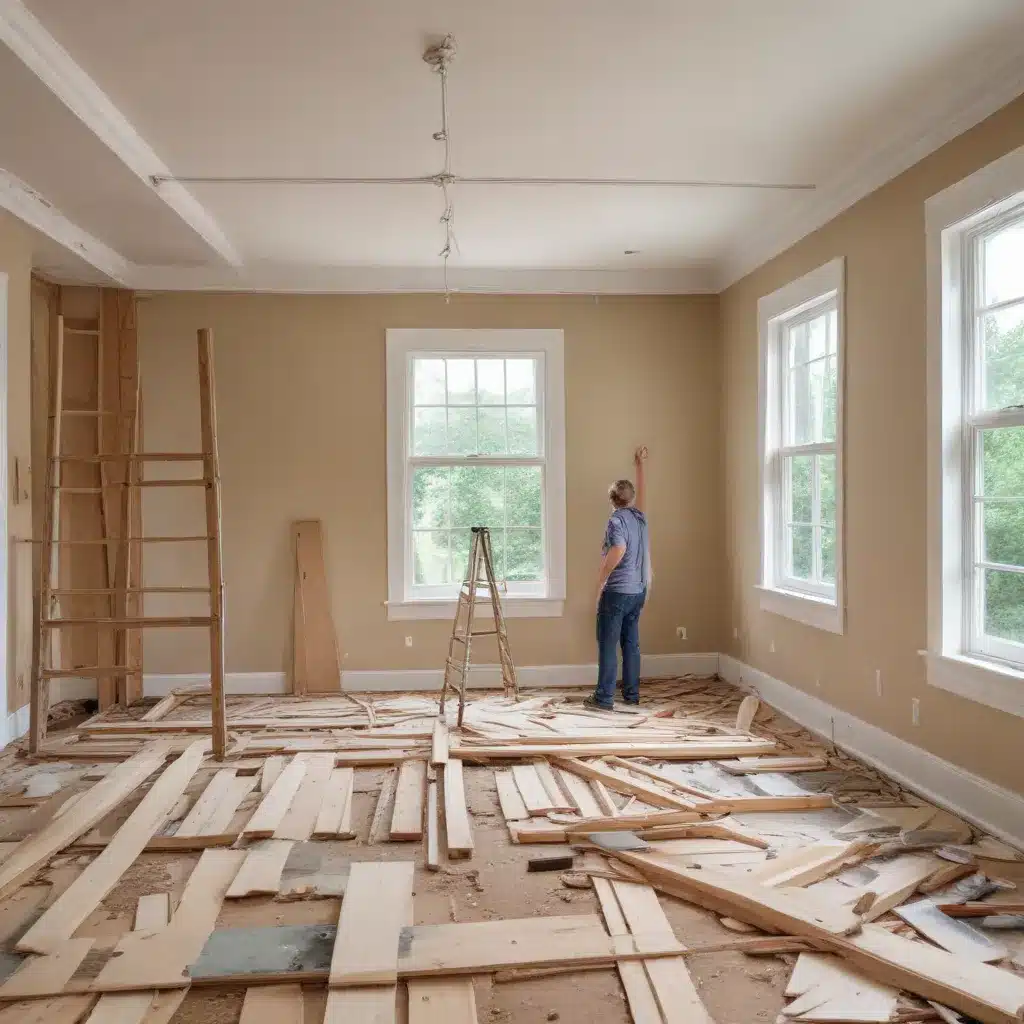
Embarking on a home renovation project can be an exciting yet daunting endeavor. Whether you’re tackling a single room or an entire property, the journey is filled with potential pitfalls that can derail your plans and strain your budget. As an experienced home improvement consultant, I’m here to share strategies and insights to help you navigate these common challenges with ease, ensuring a smooth and successful renovation.
Budgeting and Cost Management
One of the most critical aspects of any renovation is budgeting and cost management. It’s all too easy to underestimate the true extent of the work required, leading to budget overruns and unwelcome surprises. To avoid this common pitfall, begin by conducting a thorough assessment of the project scope. Engage professionals, such as contractors or inspectors, to evaluate the property and identify any hidden issues or structural concerns that may impact the overall cost. This upfront investment can save you from costly setbacks down the line.
When establishing your renovation budget, factor in not just the material and labor costs, but also any necessary permits, inspections, and potential contingencies. Unexpected expenses, like encountering asbestos or unanticipated structural repairs, can quickly deplete your budget if you’re not prepared. Allocate a reasonable contingency fund, typically 10-20% of the total project cost, to cushion against these unforeseen challenges.
Timing and Scheduling
Renovations often disrupt the normal flow of your household, so careful timeline management is essential. Start by setting realistic timelines for each phase of the project, factoring in lead times for materials, contractor schedules, and any necessary inspections or permit approvals. Coordinate with your contractors to ensure their availability aligns with your timeline, and be prepared to adjust schedules as needed to accommodate any delays.
One strategy to minimize disruptions is to plan the renovation in stages, tackling one room or area at a time. This can help you maintain a functional living space and reduce the overall duration of the project. However, for a more cohesive result, consider renovating multiple connected spaces simultaneously, ensuring a seamless flow and coordinated aesthetic.
Design and Planning
Defining your renovation goals and incorporating both functional and aesthetic considerations is crucial for a successful outcome. Begin by clearly articulating your vision for the space, considering factors such as family needs, storage requirements, and lifestyle preferences. Consult with design professionals or browse inspirational sources to refine your ideas and ensure they align with your budget and timeline.
When it comes to material selection, prioritize durability and maintenance requirements alongside your desired aesthetic. For example, in high-traffic areas, you may opt for scratch-resistant and easy-to-clean flooring options, while in moisture-prone spaces, water-resistant materials would be the wiser choice.
Regulatory and Permit Compliance
Navigating the maze of local building codes, zoning regulations, and permit requirements can be a daunting task, but it’s essential to ensure your renovation is compliant and doesn’t result in costly fines or delays. Research the specific regulations in your area and familiarize yourself with the necessary permits and inspections. Engage with local authorities early in the process to understand the requirements and submit applications in a timely manner.
Failing to obtain the proper permits or overlooking code violations can not only stall your project but also pose significant safety risks. Addressing these issues after the fact can be significantly more expensive and time-consuming, so it’s crucial to stay on top of regulatory compliance from the outset.
Project Management Techniques
Effective project management is the backbone of a successful renovation. Establish clear communication channels with your contractors, subcontractors, and any other stakeholders involved in the project. Regular meetings, detailed written agreements, and the use of project management software can all help ensure everyone is on the same page and accountable for their responsibilities.
Anticipate and plan for potential risks that could derail your renovation, such as material shortages, labor disputes, or unexpected structural issues. Develop contingency plans to address these challenges should they arise, minimizing the impact on your timeline and budget.
Material and Vendor Selection
Choosing the right materials and vendors can make or break your renovation. Carefully evaluate the quality, durability, and performance of the products you select, ensuring they meet your functional and aesthetic requirements. Research reputable suppliers, read reviews, and negotiate favorable terms to secure the best value for your investment.
When it comes to eco-friendly solutions, look for materials with low volatile organic compound (VOC) emissions, recycled content, or renewable sources. These options not only benefit the environment but can also contribute to a healthier indoor living environment for you and your family.
Post-Renovation Considerations
As your renovation nears completion, don’t overlook the importance of warranty coverage and ongoing maintenance. Familiarize yourself with the warranties provided by manufacturers and contractors, and be diligent about addressing any issues or defects that may arise within the covered timeframe.
Establish a maintenance plan for your newly renovated spaces, ensuring the longevity and performance of your investment. This may involve regular cleaning, inspections, and addressing any minor repairs or upgrades in a timely manner.
By embracing a proactive, well-planned approach, you can navigate the common pitfalls of home renovations and transform your living space into the sanctuary you’ve always envisioned. Remember, a successful renovation is not just about the final result, but also the journey you take to get there.
Ready to embark on your renovation journey? Visit Reluctant Renovator for more expert insights and practical tips to guide you through the process.



